<From Overseas Office> [Vietnam] Pregnant women working until the very last minute before the due date of their childbirth: Vietnam's childbirth situation and birth experience at a national hospital.
- Release date: Jun 06, 2024
- 6609 Views
Vietnam's population reached 100 million in 2023. Vietnam's total fertility rate in 2023 is 1.95, having remained in the 2.0 range since 2012, but is on a downward trend. In the same year, there were about 1.4 million births in Vietnam nationwide, about twice as many as in Japan. According to the National Bureau of Statistics, the population is expected to reach a peak of 107 million in 2044.
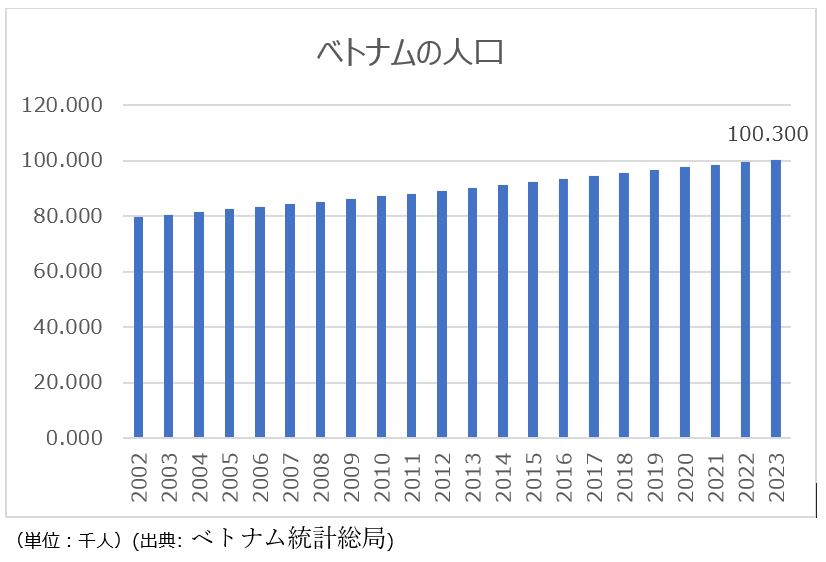
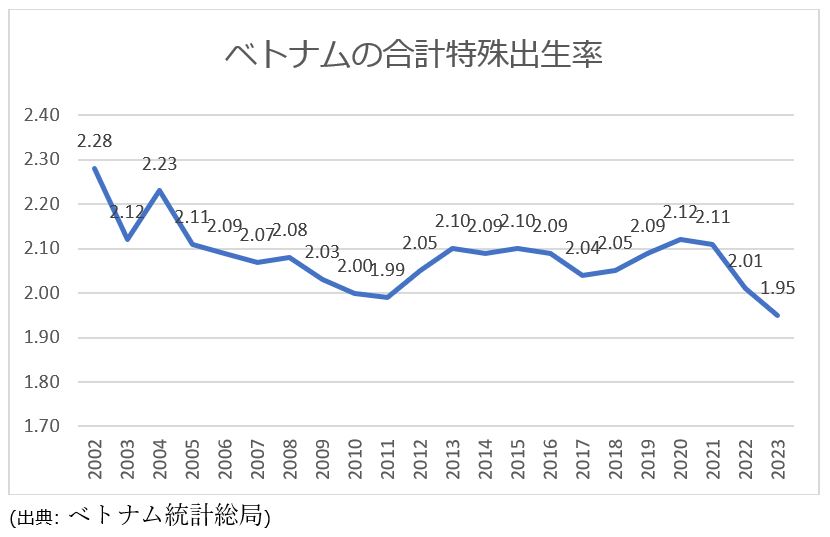
The author gave birth to her first child in the summer of 2023 at a national hospital in Ho Chi Minh City. Since there were two pregnant women in my company at the same time, I learned a lot about pregnancy and childbirth from my Vietnamese colleagues.
In this column, I would like to introduce “Vietnam's maternity leave system,” “customs of Vietnamese pregnant women before childbirth,” “birth experience at a national hospital,” and “private hospitals offering high quality services,” by mixing my own experience and local news reports. The rate is calculated at 165 dong per 1 yen. I would be happy if the customs of Vietnamese pregnant women and the situation of hospitals, which are not often known, are useful to readers in some way.
1. Maternity Leave System in Vietnam
In Vietnam, dual employment is the norm. There is no spousal deduction as in Japan, and healthy men and women go to work. Even during pregnancy, most people work until the very last minute before giving birth. This may be due to the fact that they like to spend time with their colleagues at work and feel lonely at home alone, but it may also be due to the fact that it is less physically demanding for them to commute to work, such as having a family member drive them home by motorcycle. In fact, the author was at work until 10 days before the birth, and some of her colleagues worked until 2 days before the birth.
This chapter will focus on the maternity leave system.
The maternity leave period in Vietnam is 6 months before and after childbirth, which is much longer than in Japan. During this period, social insurance benefits equivalent to 100% of salary are provided. With a doctor's permission, a mother can return to work during the maternity leave period and receive both social insurance benefits and a salary from the company during that time. Since there is no maternity leave system in Vietnam, most women return to work after maternity leave by having their mothers or mothers-in-law take care of their children, leaving them in daycare centers, or hiring babysitters. In addition, labor laws do not allow companies to fire female workers who are pregnant, on maternity leave, or raising a child under the age of 12 months. Therefore, resignation due to childbirth is rare.
2. Customs of Vietnamese pregnant women before childbirth
I am working and preparing to welcome a new family member at the same time. I would like to introduce some of them.
Baby products, from milk to diapers, clothing and bedding, can be easily purchased at supermarkets. In urban areas, maternity and baby goods specialty stores are everywhere, indicating the high demand for such items. ConCung, a major chain store specializing in baby goods, has more than 600 stores nationwide.

Baby goods chain store Concung (screenshot from official website: https://concung.com/)
Incidentally, in Vietnam, prior notification of the sex of the fetus is prohibited by law, so there is no custom such as baby showers. However, in reality, except at national hospitals, people do not seem to have much trouble because the sex of the fetus is secretly announced to them.
Distribution of milk powder samples is legally prohibited in order to promote breastfeeding. The same applies to baby food for babies under 6 months old. In an environment where sample experiences are not available, the important source of information for mothers is the experiences of those close to them and social networking sites. For example, there are large Facebook groups for mothers such as Lần Đầu Làm Mẹ*1 (Becoming a mother for the first time) with 600,000 members and Tâm Sự Làm Mẹ*2 (Sharing motherhood experiences) with 580,000 members, where information on childcare, baby goods, baby formula, diapers, etc. are exchanged. Incidentally, according to Digital 2024 Vietnam*3, among Vietnamese 16-64 year olds who own mobile devices, the smartphone ownership rate is 97.4%, higher than the 95.7% rate in Japan.
3. Birth experience at a national hospital
Here, I would like to take Tu Zhou Obstetrics and Gynecology Hospital, a national hospital in Ho Chi Minh City, where the author gave birth, as an example of a medical examination and hospitalization.
Thu Thu Obstetrics and Gynecology Hospital is one of the top obstetrics and gynecology hospitals in Vietnam. It is well known for the fact that the Japanese Red Cross Society supported the separation surgery of Viet and Doc, who were born as conjoined twins under the influence of defoliant in the Vietnam War. The number of patients at this hospital is about 3,000 per day, and the number of doctors is about 350, indicating the scale of the hospital from the figures. The number of deliveries is about 200 per day, and the doctors are literally “experienced” national hospital doctors. On the other hand, the emphasis on efficiency means that privacy is of secondary importance, and furthermore, the lack of complete nursing care places a heavy burden on the mother and her family.
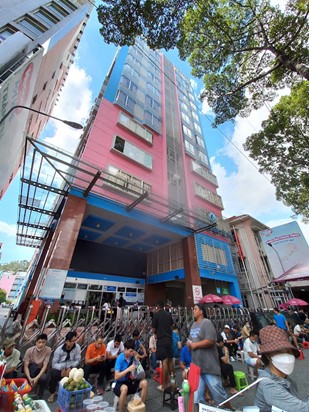
In principle, men are not allowed to enter. The attendant sits in a plastic chair and waits for the pregnant woman to finish her examination. (Photo by the author)
Efficiency-oriented medical examination and hospitalization
In order to handle a large number of patients, it is commonplace that the curtains that hide pregnant women are not closed properly during the examination, even though there are four or five other pregnant women waiting in the room. The other pregnant women's medical interviews are also overheard. Because of this environment, it is forbidden for men to accompany pregnant women to the doctor's office. Because there is no doctor-in-charge system and patients go back and forth from one doctor to another as if they were going through the motions, it takes hours to complete a medical examination, even though an ultrasound and a medical interview can be completed in a few minutes. Because of this situation, even pregnant women who plan to give birth at a national hospital often have their checkups done at a nearby private practitioner or private clinic.
Hospital stays are also short: two nights for a vaginal delivery and four nights for a cesarean section. The number of beds is limited and the hospital accepts a large number of seriously ill patients, so it is likely that the healthy patients are discharged quickly. In private hospitals, the stay is slightly longer: three nights for a normal delivery and four or five nights for a cesarean section.
The cesarean section rate in Vietnam is 37% (in 2022), which is very high compared to 22.4% in Japan, and has been increasing in recent years. In Vietnam, many babies are delivered by cesarean section in order to give birth on an auspicious day, but in recent years, medical advances have made it possible to detect cases requiring cesarean section at an early stage, which is one of the reasons for the increasing trend.
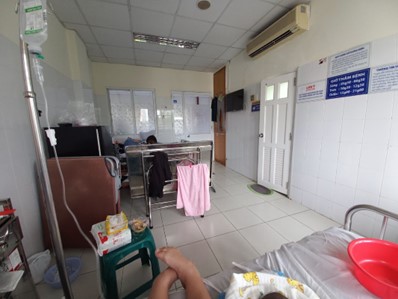
The double room (600,000 VND/night: 3,600 yen) where the author was hospitalized after childbirth. There are no curtains to hide patients. Toilet, shower, and refrigerator are shared. The mother and newborn baby sleep on a single-size bed, and the attendant sleeps on a cot next to them (photo by the author). (photo by the author).
Family nurses the newborn and the birth mother
In the absence of full nursing care, family support is essential, especially for maternity women who have had a cesarean section, as they are unable to move from the bed. The family must prepare their own meals for the obstetrician, either by bringing in food from outside or by buying it from the hospital cafeteria. When moving to a separate room to examine the newborn, the family must carry the newborn in their arms, as nurses at Tzu Chi OB-GYN Hospital are not allowed to carry newborns in their arms. This is because in the past a woman in a nursing uniform tried to take someone else's infant away.

Meal on the second day after delivery, purchased at the hospital cafeteria for 40,000 dong (240 yen) (photo by the author)
Hospitalization bags sold by the hospital
In Japan, it is necessary to buy all the necessary items for hospitalization by oneself beforehand, but at Tzu Chi Hospital, hospitalization sets are available for sale, which is very convenient for first-time mothers. The hospitalization bag contains (from left to right in the image below): postpartum pad, face towel, toothbrush, water bottle, blanket, disposable panties, nursing cup, paper napkin, and postpartum panties. And, although not at all common in Vietnam, there was an umbilical cord case. The custom of storing umbilical cords seems to be unique to Japan, and may have been introduced because of the hospital's close relationship with Japanese hospitals since the Beto and Doc surgeries. The hospital provides pajamas, but you have to prepare your own pillow and blanket.
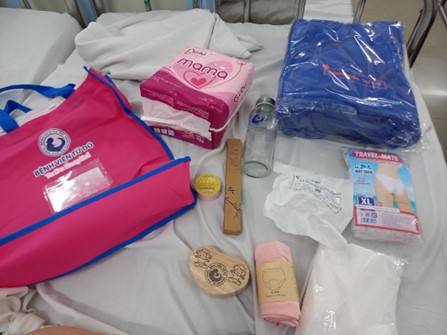
Hospitalization set about 400,000 VND (2,400 yen)
4. Private hospitals providing quality services
Because national hospitals in Vietnam are very crowded, more and more people are giving birth in private hospitals. In recent years, many people have purchased private health insurance that even covers the cost of childbirth at private hospitals.
For example, at the foreign-owned FV Hospital in Ho Chi Minh City, after childbirth, the mother stays in a spacious and clean private room, and the pregnant woman can choose the three meals provided, and even snacks are provided. Naturally, nurses will take care of the newborn when needed.
Huong Nam Hospital in Ho Chi Minh City, which opened in March 2023, is marketed as a five-star resort with luxury services. In addition to state-of-the-art “VIP” delivery rooms that prioritize safety and comfort, there are even separate rooms within the private rooms for attendants to stay overnight. After delivery, the hospital offers luxurious restaurant-like meals, massage services, herbal hair shampoos, and skin care using high-end cosmetics.
The price is 180 million VND (1.09 million yen) for the highest package (4 nights of vaginal delivery). This is a bargain compared to VND31 million (¥180,000) for a VIP package (4-night vaginal delivery) at the National Thu Thu Hospital and VND57 million (¥340,000) for a VIP package (3-night vaginal delivery) at the private FV Hospital.

Private room for VIP package at Huong Nam Hospital (screenshot from official website)
https://phuongchau.com/benhvienphuongnam/goi-sanh-sama
5. conclusion
With the current declining trend in the total fertility rate, it can be said that demand for obstetrics is also on the decline. On the other hand, however, as the economy grows, the cost per child is increasing, and there is a growing demand for comfortable, affordable childbirth. In addition, more people are willing to undergo expensive treatments such as infertility treatment. In the future, hospital services are expected to diversify to meet the needs of each pregnant woman.
Translated with AI Translator
-

Author profile
Yuki Makino
In charge of customer support at INTAGE VIETNAM. Currently, as a research assistant, I provide support for collecting local raw information and data from the perspective of an 8-year local resident. I provide clients in various industries with analysis results and improvement measures using various data.
-

Editor profile
Intage Inc.
***
 Global Market Surfer
Global Market Surfer CLP
CLP